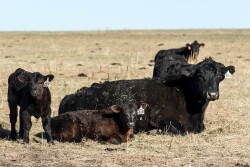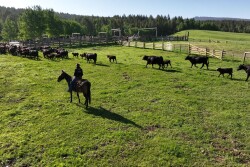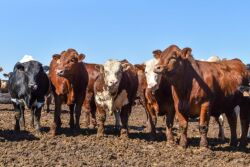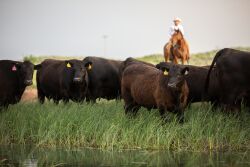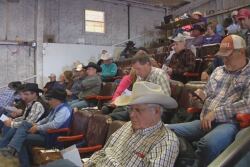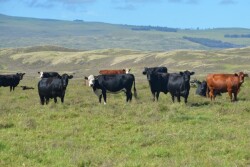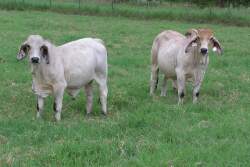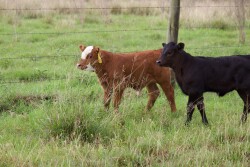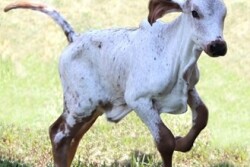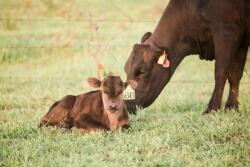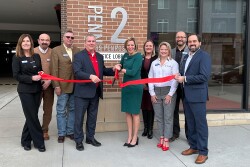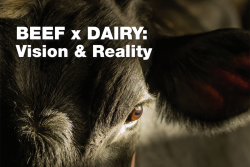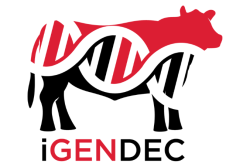Beef Genetics
A previously published article regarding an Angus “genetic mystery” was confusing, according to the American Angus Association and it has compiled answers from genetic experts about frequent questions.
American Wagyu Association names Jerry Cassady as new Executive Director effective May 1.
Since 2011, dairy cows evaluated using genetic testing has doubled every five years to exceed 1 million annually. That reduced sire generation interval to the point where genetic improvement is at the biological limit.
As beef-on-dairy animals within the feedlot system continue to rise, feedlots are craving two key pieces of information to help ensure these crossbred cattle thrive.
No matter when beef cross calves are being sold, steps can be taken to make them more marketable.
As milk prices continue to sink lower, more and more dairy producers are turning their attention to creating a healthy beef cross calf to generate additional income for their farms.
New selection traits are being developed to reduce maintenance energy requirements, increase feed efficiency and decrease methane emissions.
With a long window and investment to determine a heifer’s fate in the herd, producers should take advantage of genomic testing to get accurate information on maternal, performance, and carcass traits.
For seedstock producers, reporting performance data is critical in EPD accuracy.
Using cutting-edge artificial intelligence and sensor technologies, Oklahoma State University researchers have embarked on a groundbreaking project aimed at studying stress in cattle.
Now available in a research EPD format, functional longevity (FL) evaluates how long Angus cows stay in the herd and how many calves they produce.
To further understand the links between genetics and cattle growth efficiency, University of Nebraska-Lincoln researchers are focusing on cattle’s mitochondria—a piece of DNA inherited exclusively from the mother.
For cow-calf producers, fall is often a time for preconditioning, weaning and marketing calves. While prices will likely be towards the top end this year, could you still be leaving money on the table?
Bull purchases are among the riskiest decisions commercial cow-calf operators make, says University of Tennessee professor Dr. Troy Rowan.
The study of epigenetics identifies changes in gene function that are not due to mutations but rather how the DNA is packaged in the cell and turned on or off in the wrong conditions.
Dr. Troy Rowan with the University of Tennessee discussed sequencing strategies to enhance the next generation of genetic evaluations during the Beef Improvement Federation Symposium July 4 in Calgary, Alberta, Canada.
The American Hereford Association launches Baldy Advantage, a quarterly publication highlighting the experiences and insights of commercial cow-calf producers using Hereford-sired baldy cattle to their benefit.
A new study measured feed efficiency data for yearling Brahman bulls and to determine the relationship of these efficiency groupings to growth, feedlot performance, carcass traits, and tenderness of Brahman steers.
Missouri researcher Jared Decker used the commercial genomic prediction tool Zoetis GeneMax Advantage to investigate the ability of the test to predict the performance and profitability of a group of Angus calves.
Raising heat-tolerant cattle that are able and willing to go further to graze in subtropical climates is the goal of a new beef cattle research project at the Texas A&M AgriLife Research station at Beeville.
Scientists at Clay Center, Neb., have collaborated to produce the first gene-edited calf with resistance to bovine viral diarrhea virus (BVDV), a virus that costs the U.S. cattle sector billions of dollars annually.
Precision livestock company, Vytelle, announces Kansas City as their global headquarters.
Genetic improvement can be complicated. Here’s a look at the basics.
While dairy producers are rapidly embracing the concept of using beef semen to freshen their cows, the resulting crossbred calves are proving both a valuable opportunity and a challenge for the U.S. beef industry.
The iGENDEC product was developed with the financial support of a USDA NIFA grant with the aim of helping enterprises make genetic selection decisions that are specific to their unique circumstances.
The general manager of Southern Cattle Company describes how the ranch uses genetic selection to breed heat tolerant animals with survivability and stayability in a harsh climate.
Vytelle announces the opening of a laboratory in New Zealand, part of a five-year plan to double the laboratory capacity to produce bovine embryos through in vitro fertilization.
Sudden deaths late in the feeding phase are both frustrating and expensive. Simplot Land & Livestock says its research suggests genetic selection can greatly reduce the incidence of bovine congestive heart failure.
Hereford breeders and commercial users of Hereford genetics enrolled a record number of steers in the 2022 Hereford Feedout Program to find out how their genetics perform in the feedlot and on the rail.







